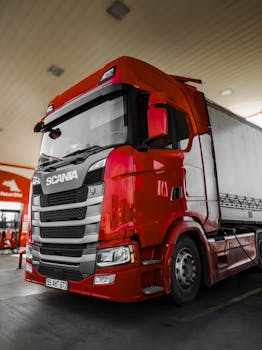
**
The rumble of diesel engines, long synonymous with the trucking industry, is starting to fade. A seismic shift is underway, as major truck manufacturers are increasingly embracing multi-fuel powertrains, signaling a dramatic departure from decades of diesel dominance. This move is driven by a confluence of factors: stringent emission regulations, fluctuating fuel prices, sustainability concerns, and the burgeoning availability of alternative fuel technologies. This article delves into the motivations behind this transition, examining the emerging multi-fuel options and their implications for the future of trucking.
The Diesel Dilemma: Why the Shift to Multi-Fuel?
For years, diesel engines reigned supreme in the trucking sector, prized for their power and efficiency. However, this dominance is facing significant challenges. Stringent regulations, such as the increasingly strict Euro VI and similar standards worldwide, aim to drastically reduce harmful emissions like NOx and particulate matter. Meeting these targets with traditional diesel engines is proving increasingly costly and complex, prompting manufacturers to seek alternative solutions.
Furthermore, the volatile nature of diesel fuel prices adds another layer of uncertainty. Fluctuations in oil prices directly impact operational costs, making truck fleets vulnerable to unpredictable expenses. A multi-fuel approach offers a degree of price hedging, allowing operators to switch to more affordable alternatives when necessary.
The Growing Importance of Sustainability
Environmental concerns are also playing a major role. The trucking industry contributes significantly to greenhouse gas emissions, and the push for greener transportation solutions is undeniable. Governments worldwide are incentivizing the adoption of cleaner technologies, and multi-fuel options, including electric trucks, hydrogen trucks, and those running on renewable diesel or biodiesel, are key components of this shift towards sustainability. This aligns with growing corporate social responsibility (CSR) initiatives among trucking companies eager to reduce their carbon footprint.
Exploring the Multi-Fuel Landscape: Alternative Fuels for Trucks
The transition away from sole reliance on diesel is not a move towards a single replacement but rather a diversification into several alternative fuel options:
1. Compressed Natural Gas (CNG) and Liquefied Natural Gas (LNG): These fossil fuels offer a lower carbon footprint compared to diesel, particularly when sourced from renewable sources. CNG and LNG trucks are already in operation, offering a relatively cost-effective transition path for many fleets. However, their range and refueling infrastructure remain limitations.
2. Renewable Diesel (RD) and Biodiesel: These biofuels are produced from sustainable sources like used cooking oil or agricultural waste. They offer a relatively straightforward transition for existing diesel engines, requiring minimal modifications. However, their widespread availability and cost-effectiveness remain areas for development.
3. Electric Trucks (Battery Electric Vehicles or BEVs): Electric trucks are gaining traction, particularly for short-haul applications. Advancements in battery technology are steadily increasing range and reducing charging times, making them a viable option for an expanding number of operations. The high initial cost and limited charging infrastructure remain significant barriers to widespread adoption.
4. Hydrogen Fuel Cell Trucks: Hydrogen fuel cells offer the potential for long-range, zero-emission trucking. They produce electricity through a chemical reaction, offering a similar driving experience to diesel but without the harmful emissions. However, hydrogen production, storage, and refueling infrastructure are still in their early stages of development.
5. Hybrid Powertrains: Combining different power sources, such as diesel and electric motors, allows for enhanced fuel efficiency and reduced emissions. Hybrid trucks offer a bridge technology, offering a smoother transition to fully electric or alternative fuel options.
The Challenges Ahead: Infrastructure and Technology
Despite the clear benefits, the shift to multi-fuel trucking faces several challenges. The most significant is the lack of sufficient refueling and charging infrastructure. Developing a widespread network of CNG/LNG stations, hydrogen refueling stations, and electric charging points is crucial for widespread adoption.
Technological advancements are also needed. Further improvements in battery technology for electric trucks, hydrogen fuel cell efficiency, and renewable fuel production are essential to make multi-fuel options more cost-competitive and practical. Furthermore, the training of technicians and drivers to handle the new technologies is a key factor in ensuring a smooth transition.
The Future of Trucking: A Multi-Fuel Reality
The transition to multi-fuel trucking is not a quick fix but a gradual evolution. Different fuel types will likely find their niche based on factors such as range requirements, operational costs, and environmental regulations. The future of trucking will likely involve a diversified fleet, with different fuel types catering to specific needs and routes.
This transition presents both opportunities and challenges for truck manufacturers, logistics companies, and policymakers. Collaboration between these stakeholders is vital to overcome the obstacles and realize the full potential of a cleaner, more sustainable, and economically robust trucking industry. The great engine shift is underway, and the road ahead, though challenging, promises a future powered by a more diverse and sustainable range of fuels. This move towards multi-fuel trucking represents not just a change in technology but a fundamental shift in the way we think about transportation and its environmental impact.




















